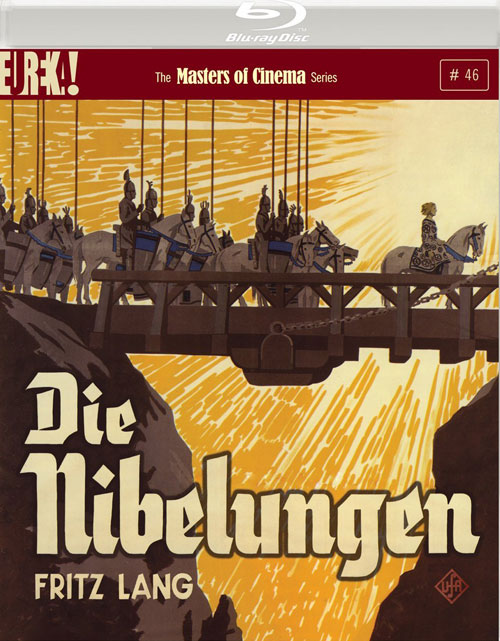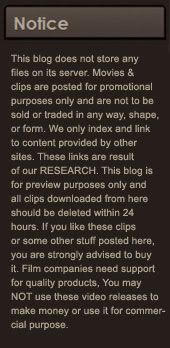Die Nibelungen (Masters of Cinema) (BLU-RAY) [1924]
Director: Fritz Lang | Label: Eureka Entertainment Ltd | Blu-ray | Format: Black & White | Aspect Ratio: 4:3 - 1.33:1 | File hosts: Uploaded.net, share-online.biz | 5% recovery + 3 .rev files | Run time: 281 minutes Language: German | Subtitle: English
Director: Fritz Lang | Label: Eureka Entertainment Ltd | Blu-ray | Format: Black & White | Aspect Ratio: 4:3 - 1.33:1 | File hosts: Uploaded.net, share-online.biz | 5% recovery + 3 .rev files | Run time: 281 minutes Language: German | Subtitle: English
 Perhaps the most stately of Fritz Lang's two-part epics, the five-hour Die Nibelungen is a courageous and hallucinatory work. Its extraordinary set-pieces, archetypal themes, and unrestrained ambition have proved an inspiration for nearly every fantasy cycle that has emerged on-screen since - from Star Wars to The Lord of the Rings.
Perhaps the most stately of Fritz Lang's two-part epics, the five-hour Die Nibelungen is a courageous and hallucinatory work. Its extraordinary set-pieces, archetypal themes, and unrestrained ambition have proved an inspiration for nearly every fantasy cycle that has emerged on-screen since - from Star Wars to The Lord of the Rings.
Watch a Trailer (sample is a lower resolution than actual DVD or Blu-ray):
In Part One, Siegfried, the film's eponymous hero acquires the power of invincibility after slaying a dragon and bathing in the creature's blood. Later, an alliance through marriage between the hero and the royal clan of the Nibelungen turns treacherous, with Siegfried's sole weakness exploited.
In Part Two, Kriemhilds Rache [Kriemhild's Revenge], Siegfried's widow travels to the remote land of the Huns to wed the monstrous Attila, and thereby enlist his forces in an act of vengeance that culminates in massacre, conflagration, and, under the auspices of Lang, one of the most exhilarating and terrifying end-sequences in all of cinema.
Adapted from the myth that was also the basis for Wagner's Ring cycle of operas, Lang's epic offers its own startling expressionistic power - a summit of the director's artistry. The Masters of Cinema Series is proud to present Die Nibelungenin a spectacular new HD restoration.
SPECIAL FEATURES:
+ Long-awaited expert HD restoration by the Friedrich-Wilhelm-Murnau-Stiftung, Germany
+ Immaculately presented in the film's original frame rates and aspect ratio, in 1080p on the Blu-ray
+ Newly translated optional English subtitles for the original German intertitles
+ An hour-long documentary: The Heritage of Die Nibelungen
+ Illustrated booklet featuring the words of Lang, rare archival imagery, and more
+ Further details to be announced nearer the release date!
REVIEW
silentlondon.co.uk
Who needs to wait for Peter Jackson’s The Hobbit? Fritz Lang’s five-hour, two-part Die Nibelungen (1924) is the king of all fantasy epics. Burning palaces, bloody fight scenes, dragons, cloaks of invisibility – this beast has it all, and it’s breathtakingly beautiful as well.
Available for the first time ever on home video, Die Nibelungen still has the power to take your breath away, so we can only imagine how imposing this magnificent saga was for audiences in the 1920s. The first part is called Siegfried and follows our eponymous hero’s outlandish adventures. Early on, he slays a dragon, then bathes in its blood, rendering himself impervious to harm (about from a small patch on his back that was covered by a falling leaf and failed to absorb the blood). Thus super-charged, Siegfried sets about becoming a king of kings, rich beyond compare having won the Nibelungen’s wealth, but doomed, equally, because the treasure is cursed, you see … The second part, called Kriemhild’s Revenge, features his (spoiler) widow seeking vengeance for her husband’s death.
Visually, Die Nibelungen is consistently mind-blowing. The camera is largely static, but the vast, intricately decorated sets, shot from extreme perspectives and filled with massive crowds in extravagant costumes will throw you into a trance. These films are never dull to look at, and sometimes, as when the light falls in elegant slivers through the forest on to Siegried and his horse, or the northern lights dance above Queen Brunhild’s castle, they are simply exquisite. If you’ve seen Metropolis, that will give you some idea of the boldness, and magnitude of Lang’s vision here. This is a strangely modernised, stylised update of the story’s Wagnerian sources, and because it is all shot on sets rather than location (even the forests), Die Nibelungen looks like a fantastical stage play magicked into three-dimensions. And the special effects are meticulously realised, from the mechanical dragon to a “wipe” superimposition that turns the treasure-bearing dwarfs to silently screaming stone. The only time you’ll lose concentration is when you’ll start wondering: “How did they do they that?”
What you see on these discs is the end result of a restoration process bringing together several different camera negatives, fixing damage and replacing missing title cards. This release also replicates the golden tinting thought to have characterised the films’ original release, which soaks lushly into Carl Hoffmann’s high-contrast Expressionist photography (there’s a detailed note on the tinting in the booklet that accompanies the discs). The Blu-Ray HD transfer is excellent, so you’ll want to watch this on the best, biggest screen you can get your hands in and let yourself be swept away by all its glory. Turn up the sound too: frequent Lang-collaborator Gottfried Huppertz’s original orchestral score is available here in stereo or 5.1 mixes and nothing less bombastic or densely textured would do.
That said, it’s an awful lot to swallow in one sitting, and the acting here is of the chest-clutching, hair-pulling grand style. Paul Richter as Siegfried is a notable offender. And the scene in the first film in which Siegfried uses his magic to help his ally “subdue” his wife in the bedroom is unpleasant to modern eyes for an entirely different reason. The illuminated Gothic intertitles are very grand, but the English subtitles are sometimes hard to read because they have been translated so literally: “Invincible be he who is the dragon-slayer!” The second feature also suffers from having a less well-structured, eventful plot than the first, too, relying on endless fight scenes between the noble Burgundians and feral Huns rather than Siegfried‘s gorgeous flights of fancy. Don’t despair though: its flaming finale, and Rudolf Klein-Rogge’s grotesque Attila, are well worth putting in the hours for.
These are two big, big films, with lots to impart to us about Lang’s film-making style, about German nationalism and myth-making in the 1920s (they are dedicated “to the German people”), and more besides. So it’s valuable that this release comes with one of Masters of Cinema’s characteristically thorough booklets, containing essays from Lotte Eisner and Tom Gunning, some words from the director and a note from British film legend Michael Powell, as well a Geoffrey O’Brien poem, all of which will help you to explore and appreciate Die Nibelungen‘s strengths. There’s also a German-language (with subtitles) documentary, The Heritage of Die Nibelungen, which will bring home to you just how ambitious these films are, and also, what a gruelling experience it was for the actors.
Die Nibelungen will demand your time and attention both – but it is terrifically enjoyable, exciting stuff. This is a hugely welcome and well-considered release of an important epic.
No Password


0 comments:
Post a Comment